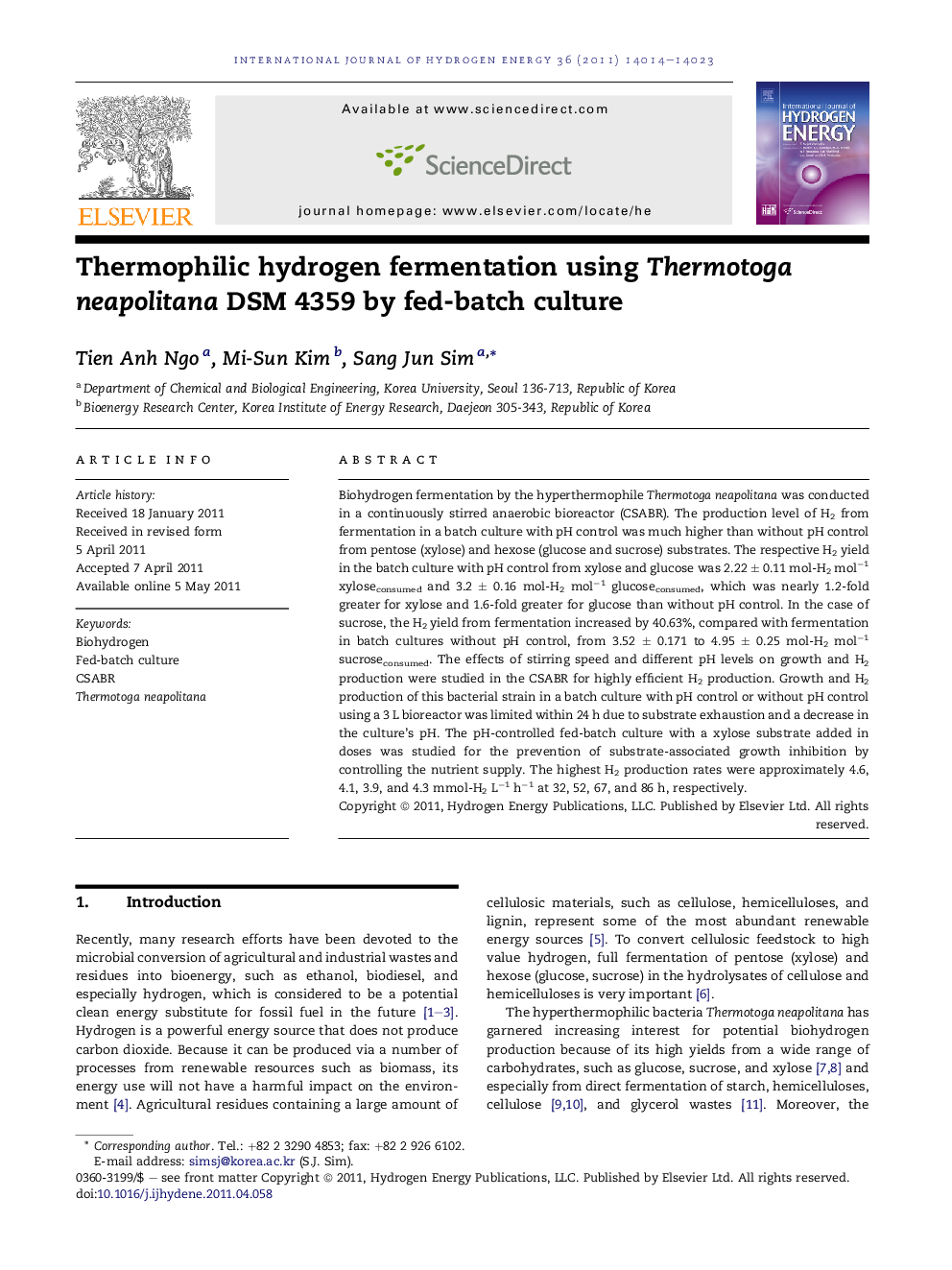| کد مقاله | کد نشریه | سال انتشار | مقاله انگلیسی | نسخه تمام متن |
|---|---|---|---|---|
| 1278756 | 1497572 | 2011 | 10 صفحه PDF | دانلود رایگان |

Biohydrogen fermentation by the hyperthermophile Thermotoga neapolitana was conducted in a continuously stirred anaerobic bioreactor (CSABR). The production level of H2 from fermentation in a batch culture with pH control was much higher than without pH control from pentose (xylose) and hexose (glucose and sucrose) substrates. The respective H2 yield in the batch culture with pH control from xylose and glucose was 2.22 ± 0.11 mol-H2 mol−1 xyloseconsumed and 3.2 ± 0.16 mol-H2 mol−1 glucoseconsumed, which was nearly 1.2-fold greater for xylose and 1.6-fold greater for glucose than without pH control. In the case of sucrose, the H2 yield from fermentation increased by 40.63%, compared with fermentation in batch cultures without pH control, from 3.52 ± 0.171 to 4.95 ± 0.25 mol-H2 mol−1 sucroseconsumed. The effects of stirring speed and different pH levels on growth and H2 production were studied in the CSABR for highly efficient H2 production. Growth and H2 production of this bacterial strain in a batch culture with pH control or without pH control using a 3 L bioreactor was limited within 24 h due to substrate exhaustion and a decrease in the culture’s pH. The pH-controlled fed-batch culture with a xylose substrate added in doses was studied for the prevention of substrate-associated growth inhibition by controlling the nutrient supply. The highest H2 production rates were approximately 4.6, 4.1, 3.9, and 4.3 mmol-H2 L−1 h−1 at 32, 52, 67, and 86 h, respectively.
► Biohydrogen fermentation by the hyperthermophile Thermotoga neapolitana was conducted in a continuously stirred anaerobic bioreactor (CSABR).
► The effects of stirring speed and different pH levels on growth and H2 production were studied in the CSABR for highly efficient H2 production.
► The fed-batch culture was studied for the prevention of substrate-associated growth inhibition by controlling the nutrient supply.
Journal: International Journal of Hydrogen Energy - Volume 36, Issue 21, October 2011, Pages 14014–14023